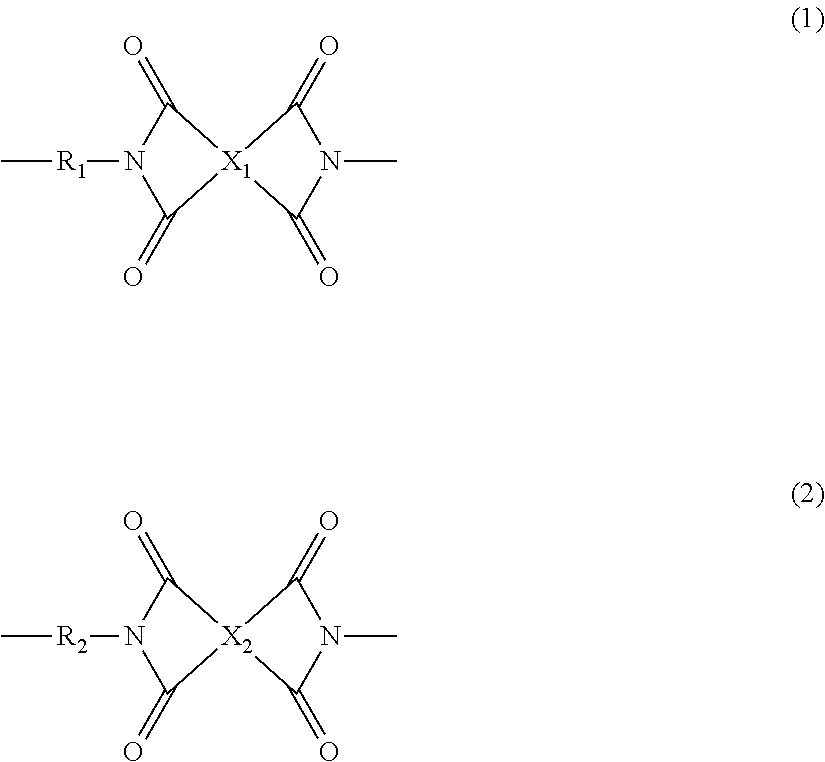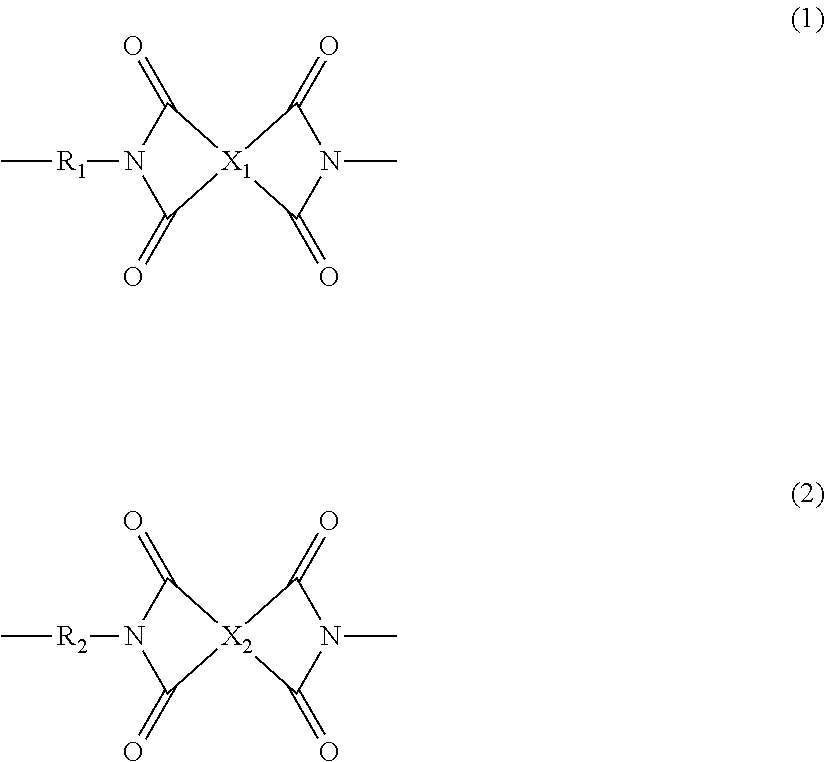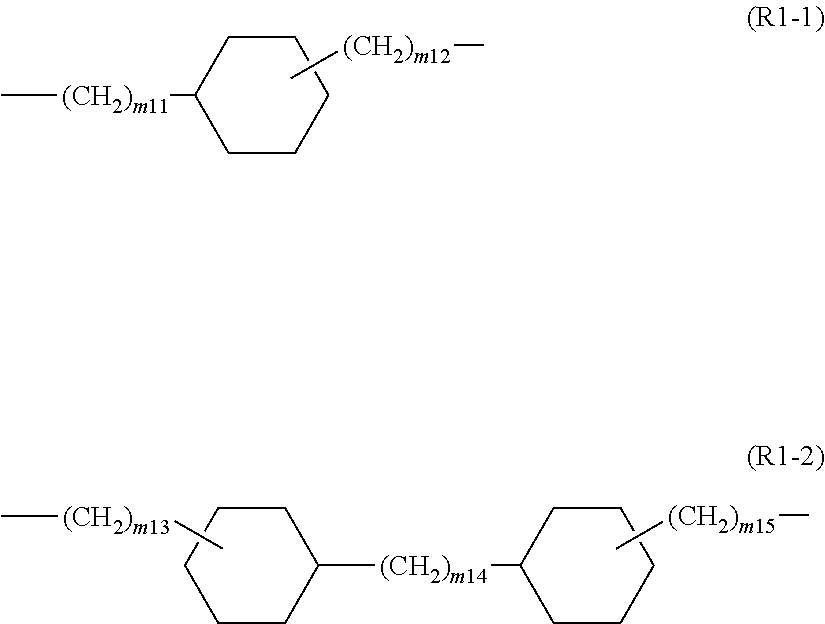Polyimide resin
a polyimide resin and thermoplastic technology, applied in the field of thermoplastic polyimide resins, can solve the problems of low molding process ability, difficult processing, and lack of thermoplasticity, and achieve the effects of excellent molding processability, less molecular weight retention rate, and easy processing
- Summary
- Abstract
- Description
- Claims
- Application Information
AI Technical Summary
Benefits of technology
Problems solved by technology
Method used
Image
Examples
example 1
[Example 1] Production of Polyimide Resin 1
[0214]650 g of 2-(2-methoxyethoxy)ethanol (produced by Nippon Nyukazai Co., Ltd.) and 218.1 g (1.00 mol) of pyromellitic dianhydride (produced by Mitsubishi Gas Chemical Company, Inc.) were introduced in a 2 L separable flask equipped with a Dean-Stark apparatus, a Liebig condenser tube, a thermocouple, and a four-paddle blade. After creation of a nitrogen flow, the mixture was agitated at 150 rpm so as to become a homogeneous suspended solution. On the other hand, 70.60 g (0.496 mol) of 1,3-bis(aminomethyl)cyclohexane (produced by Mitsubishi Gas Chemical Company, Inc.), 46.13 g (0.397 mol) of 1,6-hexamethylenediamine (produced by Wako Pure Chemical Industries, Ltd.) and 19.88 g (0.0993 mol) of 4,4′-diaminodiphenyl ether (produced by Wakayama Seika Kogyo Co., Ltd.) were dissolved in 250 g of 2-(2-methoxyethoxy)ethanol with a 500 mL beaker, thereby preparing a mixed diamine solution. This mixed diamine solution was gradually added thereto wi...
example 2
[Example 2] Production of Polyimide Resin 2
[0216]600 g of 2-(2-methoxyethoxy)ethanol (produced by Nippon Nyukazai Co., Ltd.) and 218.58 g (1.00 mol) of pyromellitic dianhydride (produced by Mitsubishi Gas Chemical Company, Inc.) were introduced in a 2 L separable flask equipped with a Dean-Stark apparatus, a Liebig condenser tube, a thermocouple, and a four-paddle blade. After creation of a nitrogen flow, the mixture was agitated at 150 rpm so as to become a homogeneous suspended solution. On the other hand, 49.42 g (0.347 mol) of 1,3-bis(aminomethyl)cyclohexane (produced by Mitsubishi Gas Chemical Company, Inc.) and 93.16 g (0.645 mol) of 1,8-octamethylenediamine (produced by Kanto Chemical Co., Inc.) were dissolved in 250 g of 2-(2-methoxyethoxy)ethanol with a 500 mL beaker, thereby preparing a mixed diamine solution. This mixed diamine solution was gradually added thereto with a plunger pump. The dropwise addition of the mixed diamine solution was carried out in a nitrogen flow s...
example 2a
[Example 2a] Production of Non-Stretched Film (Raw Material Roll Film)
[0230]Polyimide resin 2 obtained in Example 2 was melt-extruded at 330° C. with a biaxially screw extruder (“Labo Plasto Mill” produced by Toyo Seiki Seisaku-Sho, Ltd.), thereby producing a non-stretched film having a thickness of 90 μm according to a T-die / cooling roll method. The obtained film was used to perform various evaluations according to the aforementioned methods. The results are shown in Table 3.
PUM
| Property | Measurement | Unit |
|---|---|---|
| thickness | aaaaa | aaaaa |
| temperature | aaaaa | aaaaa |
| temperature | aaaaa | aaaaa |
Abstract
Description
Claims
Application Information
 Login to View More
Login to View More - R&D
- Intellectual Property
- Life Sciences
- Materials
- Tech Scout
- Unparalleled Data Quality
- Higher Quality Content
- 60% Fewer Hallucinations
Browse by: Latest US Patents, China's latest patents, Technical Efficacy Thesaurus, Application Domain, Technology Topic, Popular Technical Reports.
© 2025 PatSnap. All rights reserved.Legal|Privacy policy|Modern Slavery Act Transparency Statement|Sitemap|About US| Contact US: help@patsnap.com



